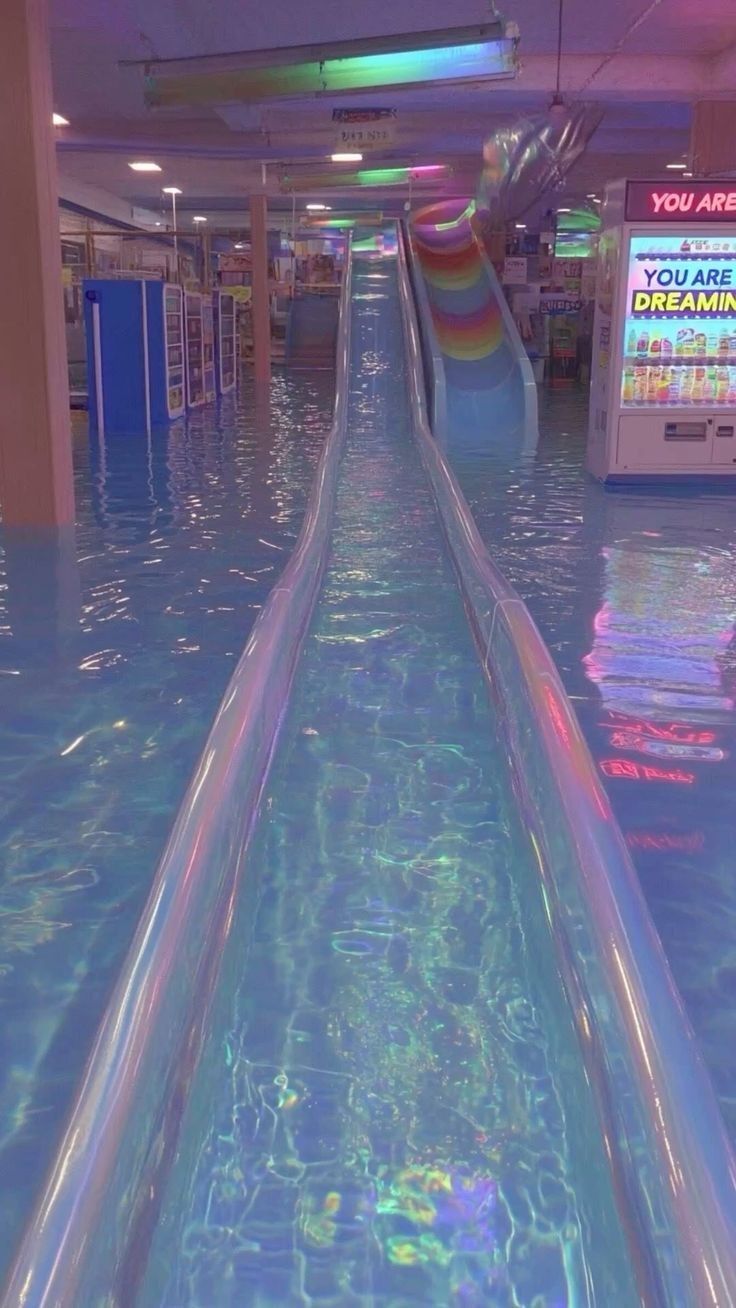

Dreamcore is a digitally-created aesthetic that epitomizes the dreamlike surrealism and vaguely familiar imagery that evoke a mixture of unsettling and comforting emotions. The aesthetic is based around dreamy, almost hallucinatory visuals that are typically 3D generated, using AI, and/or are digitally edited. Often featuring empty liminal spaces, the aesthetic has a broad overlap with similar visual aesthetics such as “liminal”, “nostalgia-core”, and “weirdcore”, with Dreamcore honing in on brighter and more surreal nostalgic imagery only seen in our dreams. The Dreamcore aesthetic encapsulates a subconscious feeling of an eerie yet hypnotic disconnect from our modern reality, captured with the camera and image quality of 1990s- early 2000s technology.
Common Dreamcore motifs often tap into American post-war suburbia and public spaces such as malls, arcades, vast hallways, are frequently paired with dreamlike elements- for example, water flowing through abandoned and overgrown buildings, playground slides inside of empty malls, or sometimes grassy fields overshadowed by giant human eyeballs in the sky. Oversaturation of early web quality imagery set in bright yet hazy pastel colors, creates for some feelings of nostalgia and for others a sense of ‘anemoia’- or the feeling of nostalgia for a time and place never experienced.

The exact timeline of Dreamcore as an aesthetic is vague, but the earliest known images trace back to 2018 on Tumblr with users using surreal 3-D imagery. Eventually, the aesthetic gained popularity in the early 2020s alongside nostalgia-core on social media platforms such as Instagram, Tiktok, and Youtube. In recent years, several video games have come out capitalizing on the internet phenomenon, such as “Dreamcore”, Childhood Memories (2022), and Disillusion ST. Often drawing on psychological thriller gameplay, these game experiences capitalize on the subconscious emotions that these illusionary worlds capture aesthetically.
Play the games here: Dreamcore Childhood Memories Disillusion ST